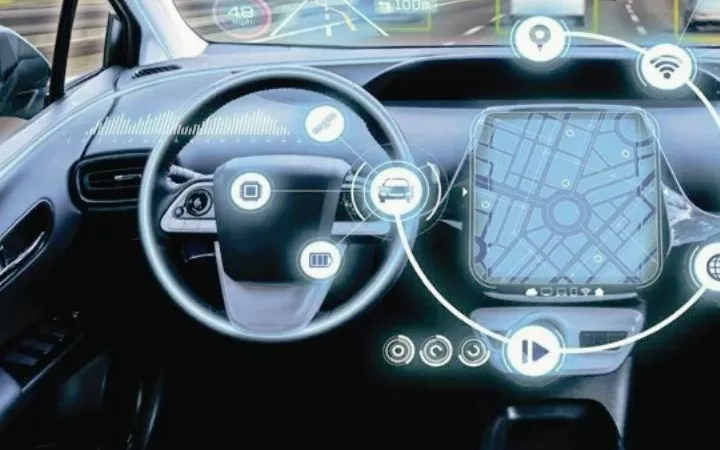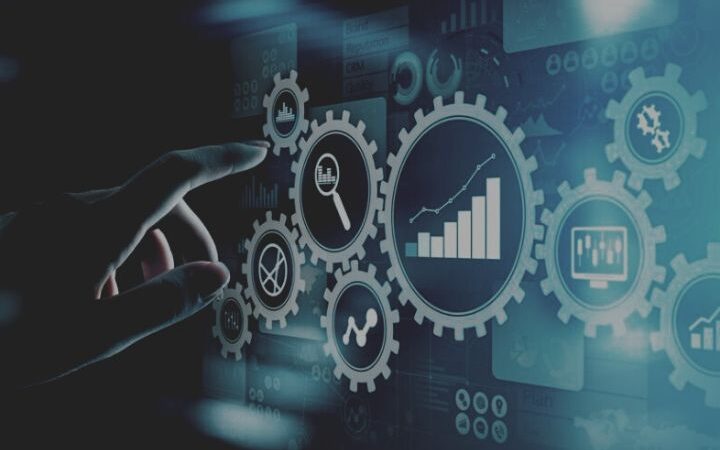What You Need To Know About Machine Learning And Its Types

In the past few years, great progress has been made, especially in machine learning. This is mainly due to the increasing availability of large amounts of data and high computing power, which are a basic requirement for the complex calculations of machine learning . Machine learning is also a trending technology.
In this processes, an algorithm learns to perform a task independently through repetition. The machine is depends on a specified quality criterion and the information content of the data.
In contrast to conventional algorithms, no solution is modeled. The computer learns to recognize the structure of the data independently. For example, robots can learn how to grab certain objects to transport them from A to B.
They are only told from where and to where to transport the objects. How exactly the robot grips, it learns through repeated trial and error and feedback from successful attempts.
Types of Machine learning:
In machine learning, a fundamental distinction is made between the following sub-areas:
– Supervised machine learning
– Unsupervised machine learning
– Semi-supervised machine learning
– Reinforcement learning
Supervised machine learning
The IT system learns based on a training data set for which the correct answers already exist with monitored machine learning.
Based on the given data sets, the algorithm learns to reach the known target variable and to set up rules and patterns.
The prediction is then evaluated. This process is repeated until the prediction corresponds to the desired quality.
The experiences from each run are repeatedly included in the learning process. If the trained model delivers the desired results, it can then be applied to anonymous data.
The goal of supervised machine learning is to generate predictions and recommendations.
In this type, a distinction is made between classification and regression.
When classifying, the model is supposed to assign data to specific classes. If, for example, an IT system automatically recognizes handwritten postcodes, then the handwritten numbers are the input in this case.
These are perceived as images by the IT system, analyzed, and classified using the digits (output) 0 to 9. E-mail providers also use the classification.
To automatically warn users of spam e-mails, monitored learning processes examine every e-mail for spam and then automatically classify the e-mails into the categories spam or not spam.
On the other hand, regression uses accurate estimates, for example, to forecast future values and identify trends. The streaming provider Netflix, for example, uses regression as a monitored learning process for content recommendations.
Based on the interests of other users as well as the user himself, he receives personalized recommendations.
Unsupervised learning
In unsupervised machine learning, the algorithm recognizes patterns and relationships independently, without explicit target variables being given to the algorithm.
Since there are no limits to unsupervised machine learning, the model recognizes all kinds of patterns and helps to find new criteria for categorization.
Compared to supervised learning, the personnel effort is somewhat lower since unsupervised learning can also be used where the ‘goal’ of the data analysis is not established.
There are several types of unsupervised learning:
Clustering: Finding clustering structures, patterns and grouping the data into a few characteristic quantities.
Associations: Search for rules that map the connection between data points.
Dimension reductions: Reduction of all existing variables to the most important ones.
It is used in marketing, for example. Here, company-specific customer master data are grouped according to their characteristics, such as ‘young people with an affinity for technological toys’ or ‘people with middle-aged children.
It is also used in chatbots. Chatbots use the questions entered by users to learn social interaction and can even recognize insults or racist statements by themselves.
Semi-supervised learning (semi-supervised machine learning)
Semi-supervised machine learning is a combination of supervised and unsupervised machine learning. Here target variables only exist for part of the total amount of data since the collection of the target variable can be associated with high costs, be it that experts have to be recruited or workpieces have to be damaged.
Obtaining data is not a problem in this scenario: If methods of unsupervised learning are used, the (few) available target variables serve as a representative characterization of the structures found;
If supervised learning methods are used, the data without target variables are used to make statistical accumulations easier to estimate.
An example of semi-monitored learning is the creation of a training data set for object detection in video data:
Based on the assumption that consecutive images of a video stream depict the same thing and that, for example, the camera angle or the position of the objects only changes slightly, personnel working time can be saved because objects do not have to be marked by hand in every single image.
Reinforcement learning
In contrast to monitored, unsupervised, and semi-monitored learning, this learning is not based on any a priori existing training data set to generate dynamically from environmental information during the algorithm’s runtime.
The artificial knowledge is learned in trial and error runs, with the model solving challenging problems based on a reward principle. This learning is modeled on the human brain.
It can be used wherever the problem-solving path is complex and diverse. Still, the desired result can be simulated or otherwise assessed without causing much ‘damage.’ Situational behavior can also be trained well through reinforcement learning.
Classic examples can be found in (computer) games, in which the surrounding world is too complex to be mapped entirely using a finite data set.
Since the possible actions and the current situation can be assessed very well, an action can be rated as ‘good’ or ‘bad’ through situational feedback.
Very similar approaches can also be found in the upbringing of children who learn through praise and criticism to find their way around the world.
In the corporate context, reinforcement learning systems can be found in direct marketing: If a recommendation system suggests relevant products to a user, it has done its job well.
If no purchase is made, the system is given negative feedback to recommend other products the next time.
Machine learning processes are used in very different areas:
- Image recognition : Machine vision algorithms can be used to recognize and categorize images. So a lot of data can be processed at lightning speed. Machine vision is used, among other things, in medical diagnostics or face recognition, but it can also be used to translate handwritten characters into print. Image recognition is also crucial for autonomous driving.
- Speech recognition : Recognizing and interpreting verbal language can also be learned using machine learning processes. These algorithms are used, for example, in voice assistance systems.
- Semantic speech recognition : written text can be semantically interpreted using machine learning. This allows context-related translation applications or chatbots that independently generate meaningful solutions.
- Pattern recognition: ML processes can also recognize patterns in sequences of events that humans cannot recognize due to the large number of data points, variables and dependencies. For example, an AI can learn error patterns in vehicle electronics from data and compare these anomalies with behavior in operation. Anomalies are recognized more quickly, which means that countermeasures can be taken early on. For example, by replacing a component before it causes a fault.
- Process optimization : The recognized patterns can also be used as an information base for optimization processes. In this, machine learning methods are machine-generated process models that enable optimized process control.
The other applications are:
Healthcare
Machine learning is already being used in healthcare today. As in other industries, a large amount of data is available here that is difficult to manage manually.
The diagnosis of diseases, long-term ECGs, or blood count evaluation quickly pushes the medical staff to their limits. This is where machine learning comes in.
From the analysis of a large number of data and the identification of patterns and relationships, the course of the disease can be recognized much faster, treated earlier, and costs for non-targeted therapies can be saved.
In detail, machine learning supplements and supports, for example, the early detection of clinical pictures, identifying tumors in X-ray or ultrasound images, or creating diagnoses based on various blood values.
Industry 4.0
Smart manufacturing or predictive maintenance are already buzzwords used in the industry with machine learning and artificial intelligence.
Behind this is the optimization of production processes and predictive maintenance of machines. Using algorithms, bottlenecks in pending process steps, for example, can be recognized before they occur so that production does not slow down or become inefficient due to waiting times.
In addition, the status of machines can be measured by installing sensors and then using algorithms to detect malfunctions or a possible failure of parts at an early stage, without this having an impact on the course of production.
Financial services
The use of machine learning can also bring advantages in the financial services industry and, for example, uncover fraud cases or help with individual financial advice.
Due to the possible individualization of the algorithms for individual users, it is already possible not to determine the creditworthiness based on standardized scorecards, which apply across the board for a region but to assess the creditworthiness based on the individual situation of the applicant.
The central bank HSBC or comdirect, on the other hand, uses machine learning to uncover illegal transactions.
logistics
Logistics is an important economic factor and is increasingly determining the success of many companies. Increasing efficiency is one of the most important goals and challenges at the same time.
The logistics industry can come a great deal closer to this goal through the use of machine learning. Forward-looking planning in the areas of capacity management, route planning, network planning, and risk management are advantages that machine learning brings with it.
For example, the expected arrival time of specific freight wagons can be forecast based on current traffic and goods data to react to unplanned deviations in real-time, by changing the production prioritization because parts are delayed, or by notifying the customer of the change if the planned initially delivery date cannot be met.
The use of machine learning in logistics even goes so far that loads will organize their transport themselves in the future. This is made possible by the increasing networking of logistics processes with one another and with customers, service providers, and cooperation partners.






